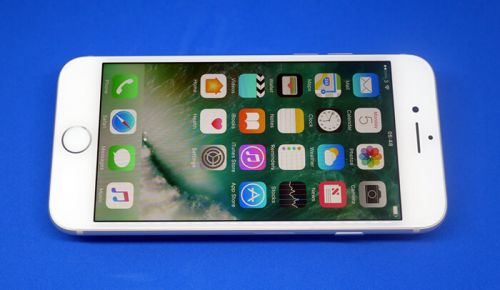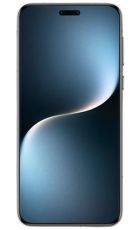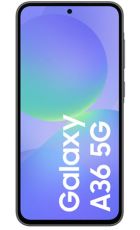Intro
Each year, Apple’s latest iPhone proves to be the most popular smartphone around - which is quite a feat when you consider the range’s premium pricing. This year we get the iPhone 7, and some have questioned whether Apple has done enough to maintain its record.
Available from £599, the iPhone 7 is more expensive than ever, so it’ll have to come up with some meaningful upgrades if people are to view it as a worthy upgrade over the iPhone 6 and iPhone 6S.
Screen
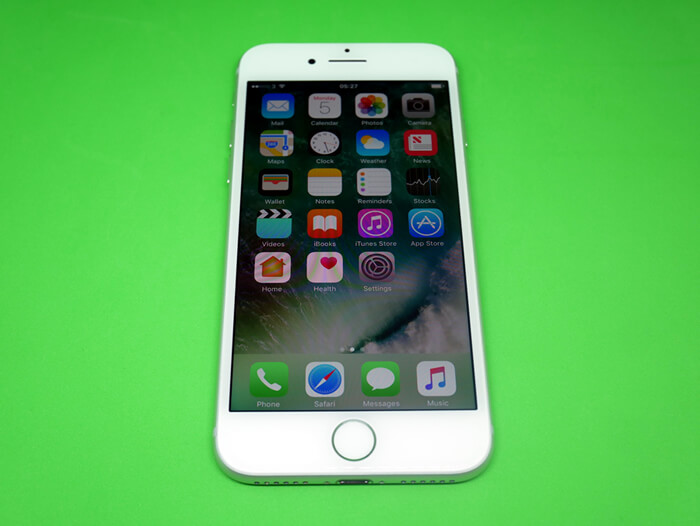
Apple hasn’t changed the iPhone 7’s core display specs, so we’re still looking at the same 4.7-inch display with a 1334 x 750 resolution that we saw in the iPhone 6S and iPhone 6 before it. In truth, Apple has long since been overtaken by Samsung on the screen quality front, with the Samsung Galaxy S7 offering a much sharper QHD resolution and significantly more vibrant Super AMOLED panel technology.
Of course, the iPhone 7 display is significantly smaller than its rivals, and a 326ppi pixel density remains plenty sharp enough for this sub–5-inch screen. Apple hasn’t been idle with the iPhone 7’s screen technology, either. It’s 25 percent brighter than before, and is what Apple calls a ‘Wide colour display,’ which means it packs in a wider colour gamut than its two predecessors for a more vibrant picture.
This isn’t mere marketing talk either. Holding the iPhone 7 and the iPhone 6S side by side, it’s clear to see that the newer phone provides bolder colours, with deeper blues and richer reds. It is indeed brighter, too, which becomes particularly useful in direct sunlight - though those of us living in the UK won’t see the true benefit of that for a few months yet.
Design
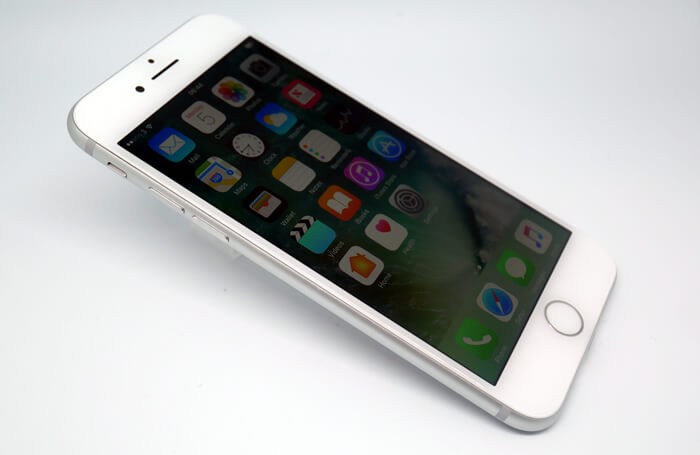
Apple has provided an elegant, solid phone in the iPhone 7, and it’s even more robust than previous models thanks to its IP67 certification. This means it will survive a dip in the bath or exposure to the rain.
There’s no getting away from the fact that it’s a very familiar-looking phone. We’re used to Apple keeping the same design for two consecutive iPhone models before changing things up, but the iPhone 7 represents the third time in a row it has used this same basic shape. It looks a lot like the iPhone 6 from 2014, only with a better-integrated antenna design, two new all-black tone options (Black and Jet Black), and a more curvaceous camera bump to distinguish it.
Still there’s a very good reason why this is the most copied phone design of recent years (just look at the Google Pixel for recent evidence of that). The iPhone 7 remains a handsome and practical phone to use day to day, and iPhone 6 or iPhone 6S users will be able to hit the ground running when they boot up their new phone.
Power
It’s no surprise that the iPhone 7 represents a considerable step up in power over its predecessor. Apple’s A10 Fusion CPU provides a sizeable 40 percent power increase over the iPhone 6S’s A9, which itself was no slouch. This is accompanied by a six-core GPU that’s 50 percent faster than the iPhone 6S equivalent.
Those are the stats, but in practice there’s little noticeable difference between the experience of using the iPhone 7 and that of the iPhone 6S. This isn’t a criticism of Apple’s new phone so much as it’s a tribute to its last one, as well as to the company’s slick iOS operating system and admirable legacy support. The iPhone 6S was more than powerful enough to tackle everything with ease and fluidity prior to being replaced, so the iPhone 7 can’t tangibly improve on that. I even ran a number of modern 3D games (typically the biggest test of power for a phone) on both handsets side by side, and generally couldn’t spot any difference in performance.
Of course, what the iPhone 7 has in its favour is headroom. History tells us it’ll be a smooth operator for at least another two years, while the iPhone 6S will likely start visibly slowing down in the next 12 months or so.
More interesting than this power bump is the fact that Apple has changed its approach to chip design, doubling the core count to four for the very first time. This isn’t a true quad-core CPU like you find on most Android phones, though. Rather, the A10 Fusion has two high-performance cores and two lower powered ones that can be intelligently switched to for lower intensity tasks. The advantage to this approach is that Apple can ramp up the power without taking a chunk out of the battery life.
Camera
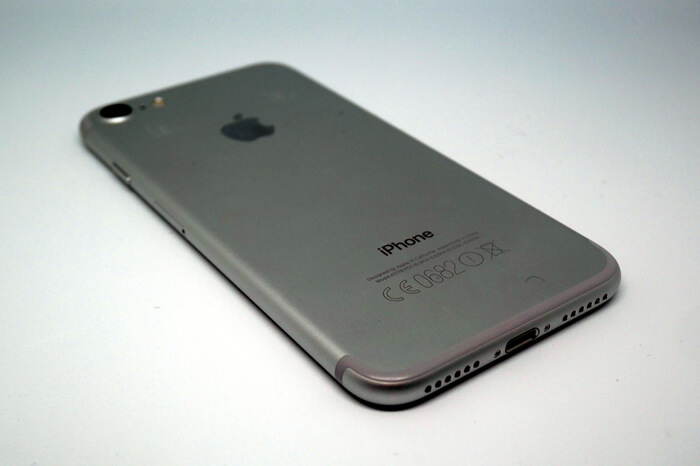
The iPhone 7 might not have received the attention-grabbing dual-lens camera of the iPhone 7 Plus, but don’t let that fool you. It offers a much better camera than the iPhone 6S before it, with a new ISP that processes images even faster.
The headline addition, however, is optical image stabilisation (OIS), which is the first time the feature has appeared on one of Apple’s smaller handsets. It enables steadier video, and contributes to capturing better low light stills. Arguably more influential is the iPhone 7 camera’s new, wider f/1.8 aperture that lets 50 percent more light in than the iPhone 6S.
In general daytime usage, you probably won’t notice a clear difference if you’re coming from an iPhone 6S or even an iPhone 6. However, I found there to be a massive improvement in challenging lighting conditions. The iPhone 7 produces significantly clearer and brighter indoors shots, as well as in night time situations with artificial lighting. That f/1.8 aperture also naturally gives you a more pronounced defocussed background or 'bokeh' effect on close-ups.
You also get an improved True Tone flash system, with double the number of LED bulbs for extremely challenging lighting situations, and a sharper 7-megapixel selfie cam.
Apple no longer has the high-end smartphone camera market all to itself as it once did, but with the iPhone 7 it once again sits at the top of the pile with the best that Samsung and Google can muster.
Features
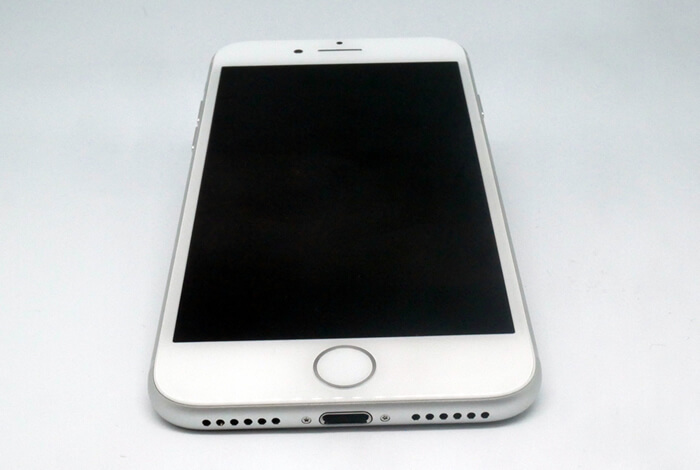
Ahead of launch, the thing that attracted most of the attention around the iPhone 7 was something it didn’t have - namely a 3.5mm headphone port. It used to sit on the bottom edge of the iPhone, along with the Lightning port and speaker, but now you’ll only find the latter two.
In order to use headphones with the iPhone 7, you’ll need to utilise the multi-function Lightning port or Bluetooth. This is undoubtedly an annoyance if you like to use your own wired headphones, which necessitates the use of a bundled adaptor. If you’re one of the majority who still rely on Apple’s own default buds, that’s less of a problem, as Apple has included a set of Lightning earphones in the box.
Where the real problem comes is when you want to charge your iPhone 7 and listen to music at the same time. It’s impossible without buying yet another adaptor. Apple is clearly pushing people towards a wire-free solution, as evidenced by the simultaneous release of its EarPods - but they’re rather expensive.
While Apple has taken away one audio feature, it ’s added another. The speakers in the iPhone 7 are a massive improvement over previous models. This is the first iPhone to sport stereo sound, with a second speaker located near the earpiece. It can also play sound at twice the volume of the iPhone 6S, and with increased dynamic range.
You don’t need to be an audiophile to appreciate the difference - everything from ring tones to YouTube videos and games gets a massive boost with the clearer sound on offer. The latter two in particular benefit from having two sound channels, both in terms of the stereo effect and because the earpiece speaker doesn’t tend to get covered up by your finger like the one on the bottom edge of the phone does.
Another notable change with the iPhone 7 is its fixed home button. You no longer get a mechanical action when you press the button, instead receiving haptic feedback - a subtle vibration - when you tap it. It’s force-sensitive like the 3D Touch screen, and you’ll get different levels of vibration according to how hard you press.
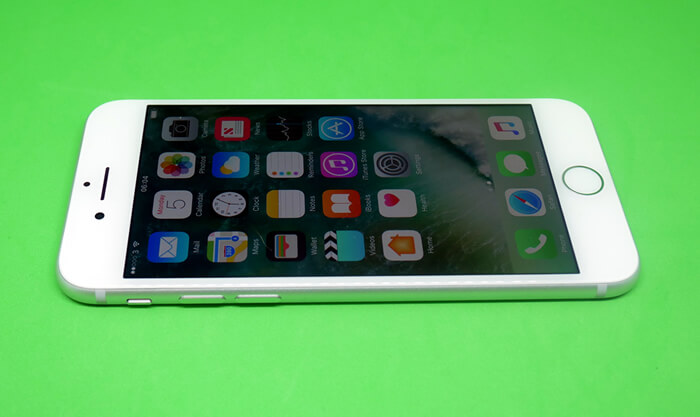
This wasn’t half as disconcerting as I expected it to be, and I made the adjustment almost immediately. My main issue came with judging the strength and length of the press when unlocking the iPhone 7’s display - I found myself accidentally bringing up Siri a few times. Again, though, this is something you’ll adjust to with time.
Battery life, memory and connectivity
Apple has fitted the iPhone 7 with a 1960 mAh battery. That’s significantly bigger than the 1715 mAh unit included with the iPhone 6S, and Apple claims that its newest phone will last two hours longer than its predecessor.
In real world usage, there is a difference, but it’s not massively pronounced. The iPhone 7 will last through a full day of moderate usage comfortably, but you’ll still want to recharge every night in order to be able to get through the following day. Where I really noticed an improvement was when I pushed the phone hard. After a similar spell of gaming on both phones, I noticed that the iPhone 7 would use up five to ten percent less battery life than the iPhone 6S. Part of this is doubtless down to that larger battery, but the more efficient A10 Fusion CPU should also get some credit.
Apple has also increased your storage options for the iPhone 7. The 16GB entry-level model of old has finally been replaced by a 32GB model, which is a far more reasonable minimum amount for a modern flagship phone. Further up the line you can opt for a 128GB model or a 256GB model - both of which should come in handy if you’re fond of shooting lots of 4K video or storing plenty of music locally.
Verdict
The iPhone 7 is yet another accomplished smartphone from Apple. While its core design remains disappointingly familiar and won’t set hearts racing, there’s something to be said for its robustness and functionality - particularly now that it’s water and dust proof.
The phone’s fixed home button and lack of headphone socket have understandably proved divisive, but are far from deal breakers in day to day usage. More meaningful in practical terms is the phone’s improved camera, which is now genuinely usable in poor light, as well as its superior storage and stereo speakers that really enhance gaming and video-watching.
Add in Apple’s persistent advantages in software and hardware support and the iPhone 7 does enough to stay top of the pile in 2016 - and probably for much of 2017 too. However, iPhone 6S users might want to consider waiting for the iPhone 7’s successor if they want something genuinely new from their next phone.
Dimensions (mm): 138.3 x 67.1 x 7.1
Weight (g): 138g
Battery capacity (mAh): 1960 mAh
Colours: Jet Black (128GB and 256GB only), Black, Rose Gold, Silver, Gold
Screen size (inches): 4.7
Resolution: 750 x 1334
Pixels per inch (PPI): 326
Processor: Quad-core, 64-bit
Processor make: Apple A10 Fusion
RAM: 2GB
Internal storage: 32GB, 128GB or 256GB
Camera: 12-megapixel (7-megapixel front-facing)
Operating System: iOS 10


